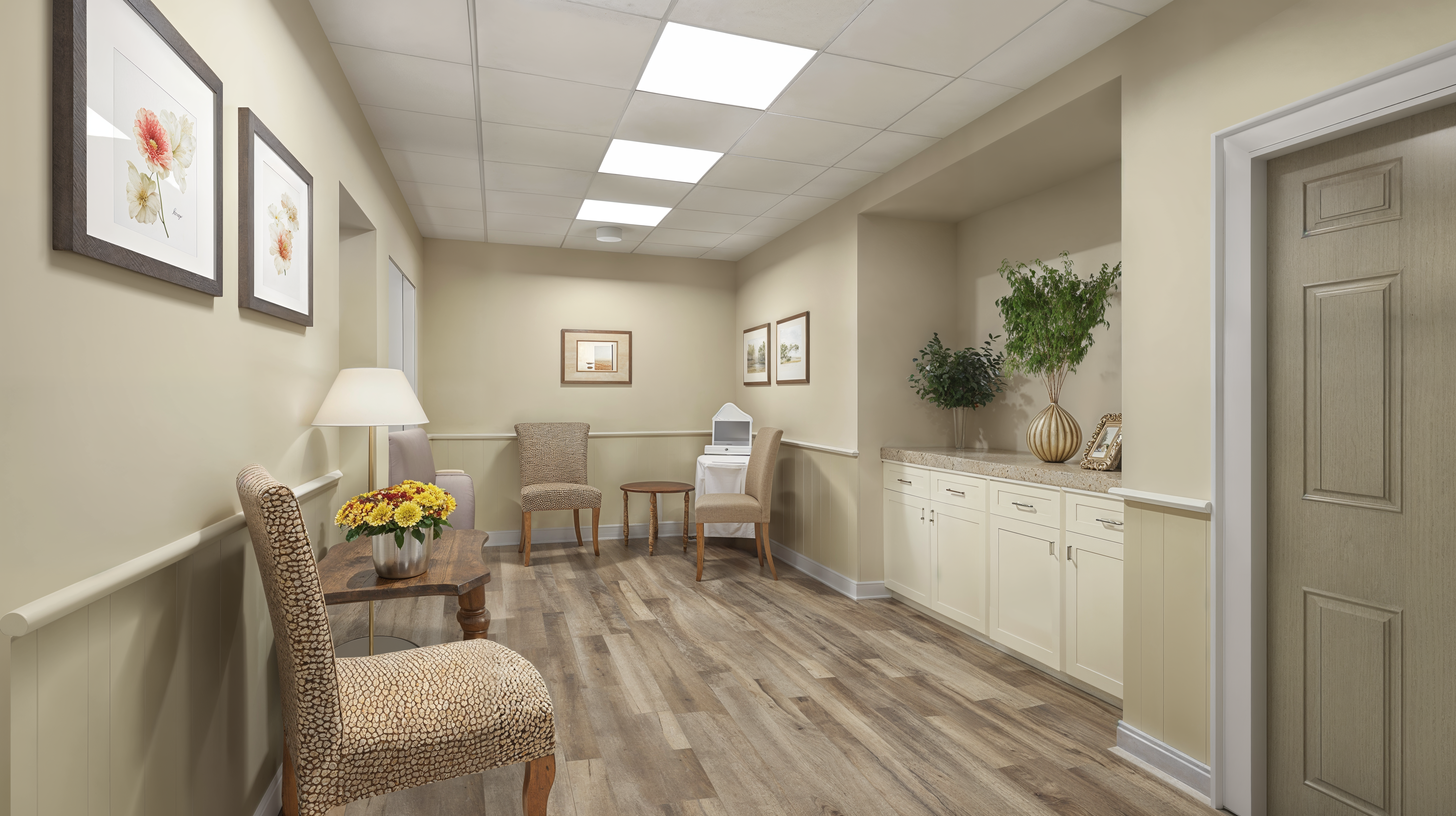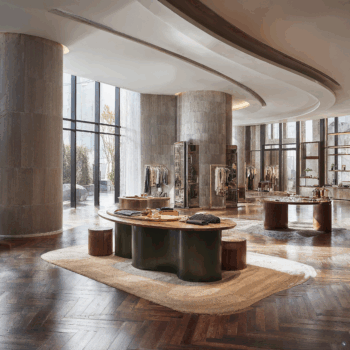
Senior living design for memory care facilities requires a delicate balance of aesthetics, functionality, and an understanding of cognitive decline. Integrating principles derived from psychological research on tactile memory, color theory, and sensory experiences helps to create environments that enhance well-being, reduce anxiety, and foster a sense of comfort and familiarity.
Tactile memory, or the ability to recall sensations experienced through touch, is a powerful tool in designing memory care facilities. Research shows that tactile experiences can evoke deep emotional responses and memories, even in those with cognitive impairments. For residents, tactile stimulation can serve as a means of grounding and orientation within their environment. Designers can utilize a variety of textures and materials to engage tactile memory. Incorporating different flooring textures such as wood, carpet, or soft rubber can signal transitions between spaces and provide sensory cues that help residents navigate. This principle, known as “sensory zoning,” can reduce confusion and disorientation.
Wall surfaces, furniture, and fabrics also contribute to tactile experiences. Soft, warm materials like wool, velvet, or suede evoke feelings of comfort and familiarity, while smoother, cooler surfaces such as polished wood or tile signal cleanliness and function. Memory care facilities often utilize textured wall coverings or handrails to encourage safe mobility while stimulating touch. These tactile elements create a more welcoming environment while promoting engagement and reducing feelings of isolation among residents.
Color plays an equally important role in memory care design. Numerous studies have examined the psychological effects of colors, and findings suggest that certain hues influence mood, behavior, and cognitive performance. Blue and green tones are associated with calming effects, which can reduce agitation in memory care residents. Earthy colors like soft oranges or yellows evoke warmth and encourage sociability, making communal areas more inviting. Color contrast also plays a role in aiding residents with impaired vision or cognitive difficulties to recognize their surroundings. High color contrast between walls, floors, and furniture defines spaces and helps to prevent falls. In memory care environments, contrasting colors around doors and frames help to distinguish private from public zones, while also subtly guiding residents toward communal areas, such as dining rooms or activity areas. This use of color to differentiate zones enhances residents’ ability to navigate independently, fostering a sense of autonomy.
Beyond aesthetics and psychological impact, the choice of materials in memory care facilities directly affects both the physical well-being of residents and the ease of maintenance for staff. Materials must be durable, non-toxic, and easy to clean to maintain infection control standards.
Vinyl and linoleum are popular choices for flooring in memory care facilities as they are durable, easy to sanitize, and can mimic natural materials like wood or stone. These materials also offer a degree of cushioning, which helps to reduce risk of injury from falls. Non-slip finishes are essential for residents who have impaired balance or mobility.
Furnishings and upholstery need to strike a balance between comfort, safety, and infection control. Antimicrobial fabrics and finishes are used to prevent the spread of infections while still providing a soft, homey feel. Stain-resistant, moisture-resistant, and easy-to-clean fabrics are ideal for memory care facilities where incontinence or spills are common. Non-porous surfaces like quartz that are resistant to bacterial growth and easy to disinfect are ideal for countertops and tables.
By harnessing the power of tactile memory, color theory, and smart material choices, architects and designers can create environments that enhance the quality of life for residents and support the caregiving process. These spaces are comforting, safe, and designed to foster a sense of independence and connection. Thoughtful design has the power to make a profound impact on those living with memory impairments, ensuring that their spaces are supportive and nurturing.
Explore more about designing for senior living facilities with our article on accessibility and ADA compliance.







